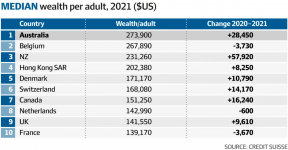The 10-page document, written by a former Department of Defence deputy secretary who was brought into contract negotiations by former defence minister Christopher Pyne, disputes at great length the claims that the French contract had blown out by billions of dollars and would not deliver on time.My sad little La Troll, it is from....
The estimated cost of building and maintaining Australia's new submarines has swelled to $225 billion over the fleet's life, according to evidence from a senior Defence official.
The head of the navy's submarine program, Greg Sammut,
But it also reveals that the French partners were obliged to sign up to commitments to Australian content without being allowed to assess whether local manufacturers could actually deliver.
...
This process began with an estimate of $50 billion mentioned in an October 2015 committee hearing which was quoting the cost of the submarine program in 2040 dollars.
"What was not stipulated but was understood at the time was that Defence was talking about the purchase of Japanese Soryu Class submarines to be built in Japan. Built and potentially delivered in the 'early 2040s,'" Mr Gillis said.
This was for a significantly smaller submarine than the current Australian subs, and submarines "built in Japan with no new infrastructure [and] no Australian content targets".
...
Mr Gillis says that the subsequent competitive bidding process delivered "a strong win for Naval Group".
"The evaluation identified that the new Attack class would be the most advanced and lethal conventionally powered submarine ever built.
"The main criteria for selection were that it would produce a regionally superior and sovereign capability.
"It was interesting at the time that my American submariner colleagues who assisted with the evaluation concluded that the new Attack could provide capabilities in a range of operational environments that would exceed some of the capabilities of the US nuclear boats.
...
"In 2016 the Program Manager Rear Admiral Greg Sammut provided in Senate Estimates evidence that the cost of the project was $50 billion in 'constant dollars' not including the inflationary factors that the Secretary had included in 2015 (based on the tendered price from Naval Group and Lockheed Martin and the costs for the shipyard and the infrastructure, sparing for the first of class and a very long list of Defence and Government related costs).
...
Mr Gillis said the situation "was exacerbated when Admiral Sammut provided an estimate to sustain the fleet over a period until 2080. Some media subsequently estimated that the total cost of the program had now 'blown out' to $235 billion."
A cabinet submission drafted by Greg Sammut, and released after an FOI request, was sent to the Defence deputy secretary responsible for shipbuilding, Tony Dalton, 34 days before the cancellation of the program on August 20 last year.
It said: "The updated program cost estimate is $46.4 billion in 2016 constant dollars, which remains within the original acquisition cost estimate of $50 billion in 2016 constant dollars announced at the outset of the Attack class submarine program in April 2016".
Now go to hell with your late, over budget, without Australian content, and may be never delivered SSN




 Ironically your interest rates are twice as high as the EU's though. People just prefer lending to larger blocs because it's safer if your money goes up in larger puff of smoke.
Ironically your interest rates are twice as high as the EU's though. People just prefer lending to larger blocs because it's safer if your money goes up in larger puff of smoke. 


























